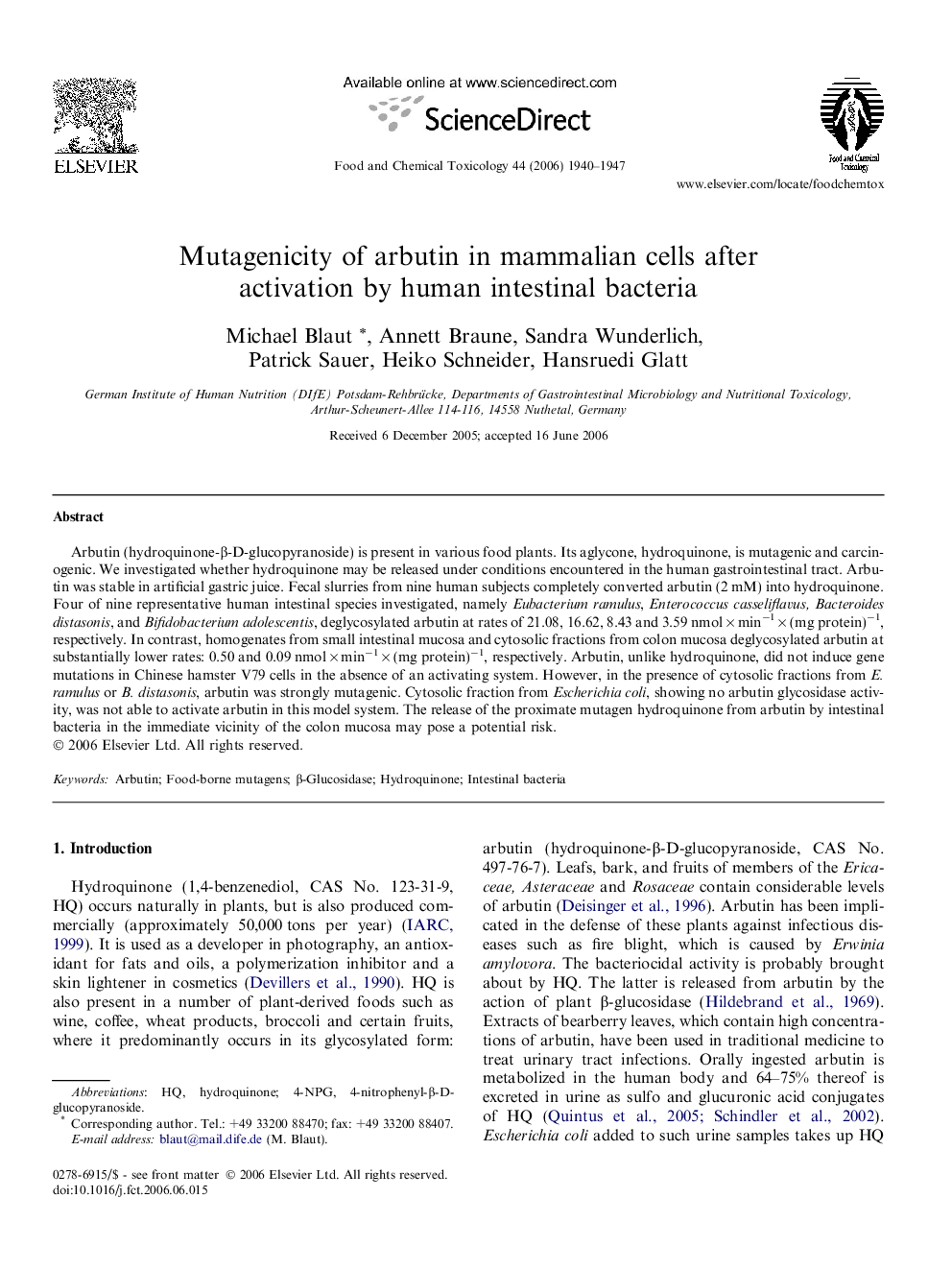| Article ID | Journal | Published Year | Pages | File Type |
|---|---|---|---|---|
| 2587222 | Food and Chemical Toxicology | 2006 | 8 Pages |
Arbutin (hydroquinone-β-D-glucopyranoside) is present in various food plants. Its aglycone, hydroquinone, is mutagenic and carcinogenic. We investigated whether hydroquinone may be released under conditions encountered in the human gastrointestinal tract. Arbutin was stable in artificial gastric juice. Fecal slurries from nine human subjects completely converted arbutin (2 mM) into hydroquinone. Four of nine representative human intestinal species investigated, namely Eubacterium ramulus, Enterococcus casseliflavus, Bacteroides distasonis, and Bifidobacterium adolescentis, deglycosylated arbutin at rates of 21.08, 16.62, 8.43 and 3.59 nmol × min−1 × (mg protein)−1, respectively. In contrast, homogenates from small intestinal mucosa and cytosolic fractions from colon mucosa deglycosylated arbutin at substantially lower rates: 0.50 and 0.09 nmol × min−1 × (mg protein)−1, respectively. Arbutin, unlike hydroquinone, did not induce gene mutations in Chinese hamster V79 cells in the absence of an activating system. However, in the presence of cytosolic fractions from E. ramulus or B. distasonis, arbutin was strongly mutagenic. Cytosolic fraction from Escherichia coli, showing no arbutin glycosidase activity, was not able to activate arbutin in this model system. The release of the proximate mutagen hydroquinone from arbutin by intestinal bacteria in the immediate vicinity of the colon mucosa may pose a potential risk.
